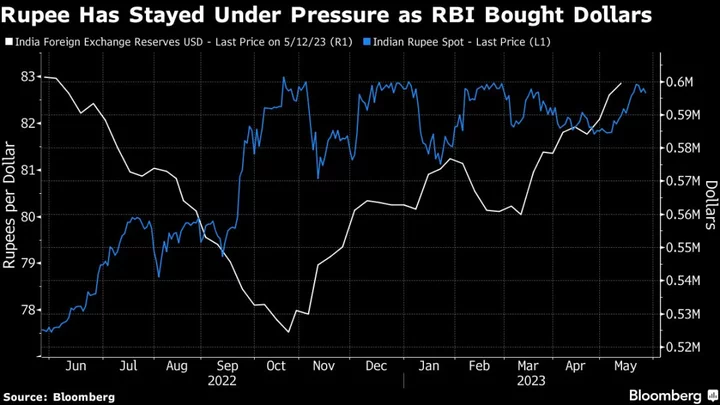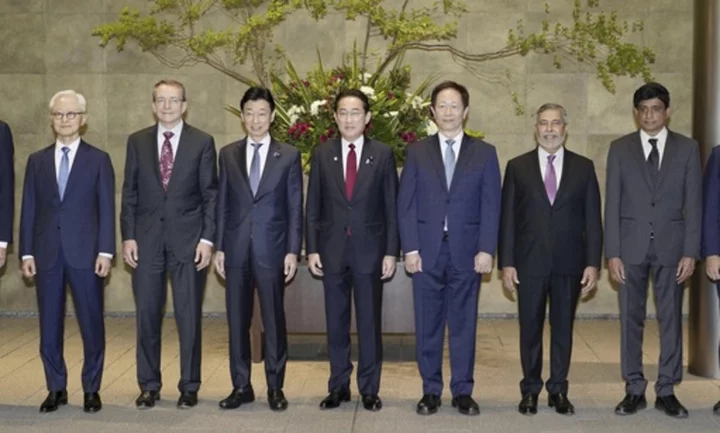
Liam Payne reveals he was hospitalised due to a ‘serious kidney infection’
Liam Payne is on the road to recovery, as he revealed that he was recently hospitalised due to a kidney infection. The singer, 29, took to Instagram on 25 August to share the news, while he announced that his upcoming tour - which was supposed to start next month - is going to be postponed. He expressed that his doctors advised him to focus on his health, after he’d been hospitalised due to a kidney infection. “It’s with a heavy heart I have to tell you that we have no other choice but to postpone my upcoming tour of South America,” he wrote in the caption, alongside a video of himself. “Over the past week I’ve been in hospital with a serious kidney infection. It’s something I wouldn’t wish on anyone, and doctors orders are that I now need to rest and recover.” While Payne expressed that he was “beyond excited to play” music, he acknowledged that fans will soon be refunded for their tickets. However, the former One Direction member also added that the new dates haven’t been decided yet. “To all of you who have bought tickets, I’m so sorry. We’re working to reschedule the tour as soon as we possibly can, but for now we will be refunding the tickets. So, please look out for updates from your point of purchase,” he wrote. “Thanks as always for the love and support, and look forward to seeing you soon.” In his video, the “Bedroom Floor” singer went on to describe how he’d been a “bit unwell” recently, following the “bad kidney infection”. “We started rehearsals, and I’ve just been advised that now is not the right time for me to be out on the road, trying to recover from this,” Payne said. “I have the best people around me at home trying to help me recover as we speak.” He also added that he hopes that when the time comes, he could “put on an even bigger show” for his fans. According to the National Health Service, hospitalisation as a result of kidney infection can occur for a variety of reasons - such as when a patient is severely dehydrated, unable to swallow or keep down any fluids or medicines, or has a weakened immune system. Fans rushed to the comments section of Payne’s video, where they sent him sweet messages and hoped for him to make a healthy recovery. “Always got your back, champ,” one wrote, while another added: “Get well soon! Love you and here for you forever and always.” A third wrote: “Sending one massive BIG hug your way.” The tour was initially set to kick off on 1 September in Lima, Peru, with his final show in Mexico City, Mexico, on 12 September. In July, Payne made his official return to his YouTube channel, where he discussed how excited he was to go back on tour. He also spoke candidly about his health, after finishing a 100-day rehabilitation stay and was nearly six months sober. Payne went on to admit that prior to sharing the YouTube video, he removed himself from the public eye for his mental well-being. “I just needed to take a little bit of time out for myself actually, because I kind of became somebody who I didn’t really recognise anymore,” he explained. “And I’m sure you guys didn’t either. I was in bad shape up until that point and I was really happy to kind of put a stopper to life and work.” In the YouTube video, the “Strip That Down” singer also discussed his appearance on Logan Paul’s podcast, Impaulsive. Payne expressed regret for some of the things he said about Zayn Malik, after professing that there were “many reasons why he disliked” his former One Direction bandmate. “I think for me, a lot of what I said just came from the wrong place,” Payne recalled. “I was so angry at what was going on around me that instead of taking a look inwards I decided to take it outwards.” Payne said he thought his anger stemmed from frustrations with his career and, rather than reflecting privately, he took his feelings out on others. He added that he “wanted to apologise” for his behaviour. Read More Liam Payne apologises for Zayn Malik comments as he completes 100 days in rehab Zayn Malik discloses ‘underlying issues’ that led to him quitting One Direction: ‘We got sick of each other’ Liam Payne says he’s over 100 days sober: ‘I feel amazing’ ‘Boy moms’ receive backlash for teaching sons how to cook - but for the wrong reason This is how stress affects different parts of the body Chris Pratt’s daughters give him a glittery makeover
2023-08-26 05:58

Southeast Asia nations hold first joint navy drills near disputed South China Sea
The Association of Southeast Asian Nations has begun its first joint naval exercise at a time when several member countries are responding more strongly to increasing Chinese assertiveness in the area
2023-09-19 17:26

Maryland Supreme Court orders stay in Adnan Syed case as it weighs appeal
Maryland’s highest court has issued an order to prevent Adnan Syed's murder conviction from being reinstated by a lower court, as the court decides whether to hear his appeal of the lower court’s decision
2023-05-26 06:28

Trump lawyer Alina Habba leaves his defence team in New York fraud case
Donald Trump’s lawyer Alina Habba has stepped down from her role defending the former president in the fraud lawsuit filed against him by New York Attorney General Letitia James. Ms Habba has taken up a new role with Mr Trump’s Save America leadership political action committee. A press release issued by the PAC says that Mr Trump appointed Ms Habba to be his legal spokesperson and general counsel to Save America, though she will also still assist the former president with “certain legal matters”. “Alina has worked diligently and tirelessly on many of the witch-hunt cases that have been unfairly brought against President Trump,” said Steven Cheung, communications director for the Trump 2024 campaign. The statement continues: “While the Habba Madaio Law firm will continue to assist the President in certain legal matters, Ms Habba will withdraw from the New York Attorney General’s case against the Trump Organization and President Trump and other cases, in order to devote her time to Save America and her duties as his media representative on legal matters.” Ms Habba says: “It is an honour to be asked by such a leader as President Trump to help Save America. Being able to devote more time to addressing publicly his many legal matters is the privilege of a lifetime.” The appointment is effective immediately. Ms Habba is also tied to and more widely known for her role in the Mar-a-Lago classified documents case and was called before the federal grand jury. She spoke on Jesse Watters’ Fox News show amid news that the grand jury indicted Mr Trump on charges related to his allegedly unlawful retention of national defence information. The attorney claimed the indictment was a distraction from supposed impropriety on behalf of President Joe Biden of which House Republicans have so far failed to produce any evidence. “Every single time there is a coordinated dance that is becoming obvious to the American people because they are smart,” Ms Habba said. She added that the indictments of the twice-impeached former president were the equivalent of a “shiny ball” meant to distract the American public. “I’m embarrassed to be a lawyer at this moment,” she said. “Honestly, I am ashamed. I’m ashamed to be a lawyer. I’m ashamed that this is the state of our country.” Ms Habba claimed the indictment showed the United States had a two-tiered system of justice. “And it is so obvious that there’s this dual system of justice,” she said. “This is selective prosecution, selective persecution. It is absolute persecution. It is Russia third world stuff, and it should not be happening.” Read More Trump lawyer says she’s ‘ashamed’ and ‘embarrassed’ over secret papers indictment Trump attorneys worry some may snitch to feds as documents probe closes in, report claims Trump attorney Alina Habba reveals why his mugshot shouldn’t be released AOC says idea Trump is victim of a ‘two-tier’ justice system is an insult to Black and brown Americans
2023-07-10 00:46

British nurse found guilty of murdering seven babies
A British nurse was found guilty Friday of murdering seven newborn babies and trying to murder six others at the hospital neonatal unit where she worked, becoming the UK's...
2023-08-18 20:50

Africa Phone Giant MTN Expects Nigeria Reform Recovery Mid-2024
MTN Group Ltd. expects Nigeria to overcome the short-term “pain” of President Bola Tinubu’s economic reforms by the
2023-11-09 16:48

Europeans Reluctant to De-Risk From ‘Partner’ China, Survey Says
Most Europeans consider China a key economic partner despite seeing limits to the relationship, according to a survey
2023-06-08 11:59

Citigroup Says Rupee Is Set to Rebound From Near Record Low
India’s rupee is set to bounce back from near an all-time low as the central bank slows its
2023-05-29 13:57

'I feel like I can finally breathe again': 'RHOC' alum Braunwyn Windham-Burke finalizes divorce from Sean Burke
Braunwyn Windham-Burke, who was married to Sean Burke for 23 years, came out as a lesbian in 2021
2023-11-19 21:54

'It's fear-driven': Jill Duggar reveals why she considers her family's church a 'cult'
'I think we do that as well with our kids. We try and value family time, be intentional. Don't just let the days pass,' said Jill Duggar
2023-09-09 08:26

Impeachment trial of Texas’ Ken Paxton to begin no later than August 28
A historic impeachment trial in Texas to determine whether Republican Attorney General Ken Paxton should be permanently removed from office will begin no later than August in the state Senate
2023-05-30 07:52

Japan's leader welcomes investment, exchanges to strengthen computer chip supply chain
Japanese Prime Minister Fumio Kishida at a meeting with computer chip makers has stressed that investment and international exchanges to strengthen the supply chain were welcome
2023-05-18 12:27
You Might Like...

Padres pitcher Michael Wacha has no-hitter through 7 against Royals

Who is Gail D'Anthony? Trial date set for 76-year-old Maryland woman accused of killing her husband with cane

China and the US pledge to step up climate efforts ahead of Biden-Xi summit and UN meeting

At least four dead in mass shooting in Philadelphia

Superconductor Stocks Drop in Korea Amid Doubts on Breakthrough

10 Facts About Ivory-Billed Woodpeckers, North America’s Most Famous (Probably) Extinct Bird

Derna valley was once a 'paradise.' Now there's nothing left but devastation

How did Randy Meisner's second wife die? Eagles co-founder, 77, stepped away from limelight after Lana Rae's death in 2016
